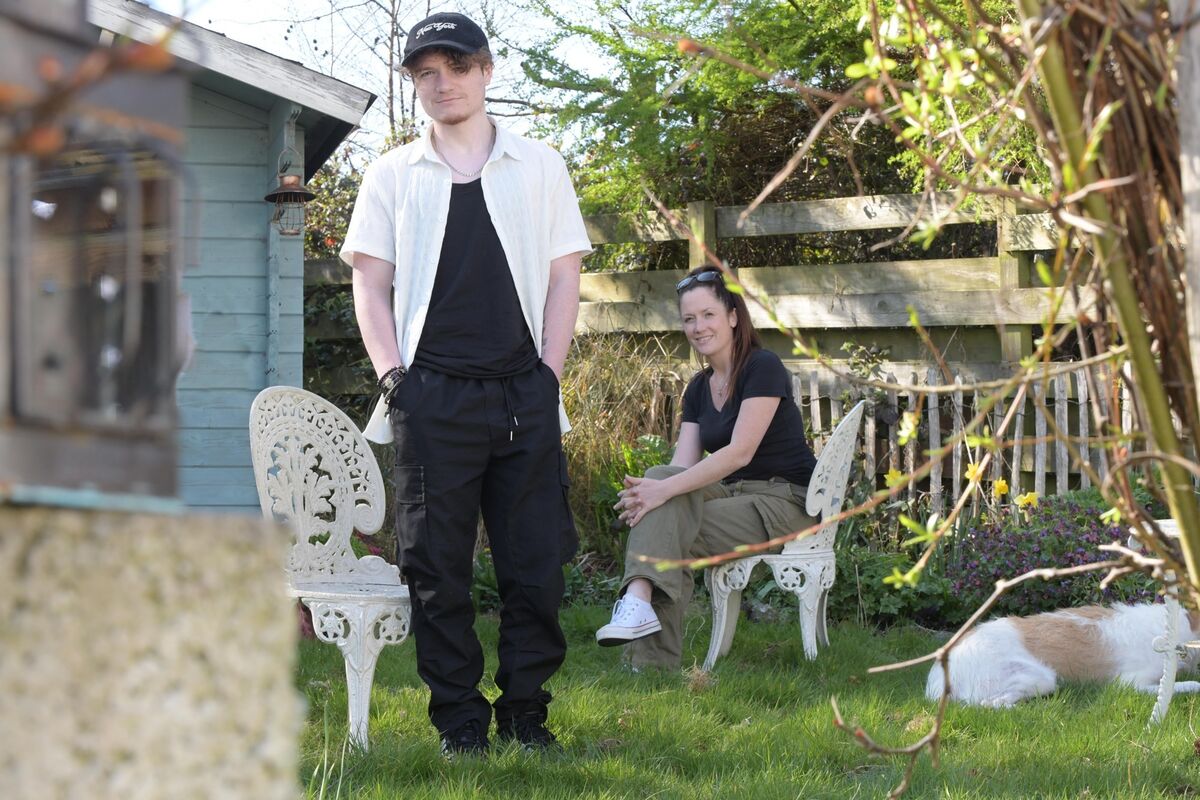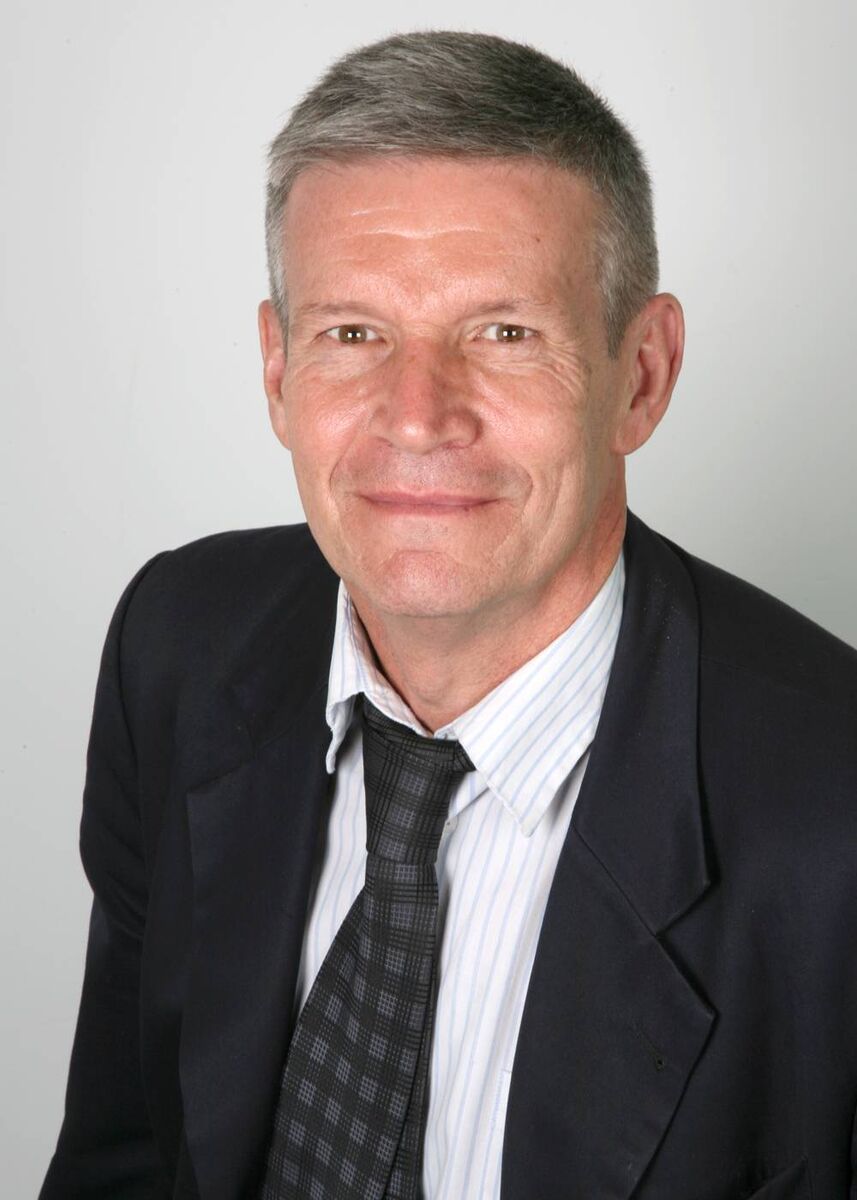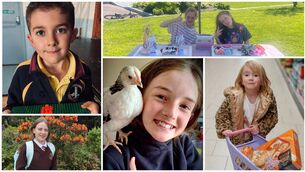Jack Lambert, consultant in infectious diseases at the Mater, Rotunda, and University College Dublin, recalls seeing “long covid coming” in March 2020.
Researching the SARS and MERS viruses, he found that some people — infected a decade or two earlier —were still sick years later. “I set up a long-covid clinic in summer 2020. I started seeing adults then, and adolescents were arriving by early 2021. I started seeing some children — under-12s — in 2022, 2023.”
Lambert, a consultant in paediatric infectious disease at Great Ormond Children’s Hospital for six years, before arriving in Dublin in 2005, started seeing children and adolescents at the long-covid clinic out of necessity.
“Families were going to GPs, trying to be seen by paediatric infectious disease clinics,” Lambert says. “They were being declined; these clinics don’t see long-covid cases.
“Since the start, I’ve seen a couple of dozen children: Fewer than 20 under-12s, about 50 adolescents. But covid is still around, cases continue to accumulate. And [as a private clinic], I’m only seeing those who can afford it. Lots of families don’t have the resources.”
Between 5% and 10% of children and adolescents who get covid develop long covid. To the best of Lambert’s understanding, no dedicated long-covid paediatric service exists in Ireland. Young patients are frequently told by medics to ‘just exercise’, or ‘push through it’, or ‘give it time and you’ll get better’.
“Children who used to be athletes, who used to run around for hours a day, now they’re barely able to walk to school,” Lambert says, yet recommendations to ‘push through’ represent “the worst advice”.

“Conditions like long covid are energy-limiting. Children with long covid suffer post-exertional malaise: When they try to push too far, they crash. Their symptoms flare up. They’re totally exhausted; end up having to go to bed.”
Children are more likely than adults to be told to get on with it. “Very often, children’s symptoms are attributed to behavioural problems, to ‘faking it’. They’re made to believe it’s ‘all psychological’, not a ‘real’ physical condition.”
Long covid is associated with 300 symptoms and each sufferer typically has 10 or 15. Common symptoms include: Exhaustion, brain fog, cognitive problems, palpitations, autonomic dysregulation, energy depletion, neuro-inflammation and mood problems, headaches, and sleep disturbance.
Lambert says: “Children, adolescents, can just get exhausted looking at a computer. They are sensitive to noise, sound, and light. And they’re told, ‘You’re just anxious’. They’re not: They have autonomic dysregulation. Their para-sympathetic nervous system is imbalanced, so they’re on edge. This is adrenalin-driven rather than psychologically-driven.”
Paediatricians, GPs, and schools don’t understand childhood long covid, Lambert says. He sees “no effort” by the HSE to educate about it. “So how can GPs or schools know about it?”
The ‘flu’ for four years
Wicklow-based Christina Doyle’s three children have had seven confirmed covid infections between them. Conor, 18, and Holly, 15, were diagnosed in December 2023. By then, they had suffered debilitating symptoms, and many medics had dismissed Doyle’s concerns.
In March 2020, Conor was one of the first locally to be diagnosed with covid. Doyle says: “I knew within weeks this was something serious. He could barely leave his bed, except to go to the toilet or to vomit. He had serious nose bleeds, 20 minutes long, huge clots of blood. His joints burned like fire.
“Profound fatigue continued. It meant if he made it downstairs, he’d have to lie on the couch; he couldn’t stand for more than a minute. He was sleeping 18 hours a day.”
Holly also had joint burning sensations, as well as severe migraine, which she’d never had before covid.
“She was very rarely sick before. She doesn’t complain, so I knew there was something seriously wrong. She was crying, saying, ‘Are we ever going to get better?’

“Her main symptoms were fatigue and muscle weakness. She’d always been very active, bubbly. Now, she needed to sleep during the day. I’d say to doctors, nurses, ‘They still aren’t better’. I was told it’s a new virus, the children are just anxious.
“I remember sitting in my living room, the two of them in bed, thinking, ‘They’re both sick and nobody’s listening’.”
Mother of three Natalie Kilbane says her 15-year-old son and 13-year-old daughter never recovered after their first covid infection in October 2020. “They hadn’t been to a GP in five years. They were very active, healthy, happy kids, with no underlying issues. Our whole family is very active: We all played sports, went kayaking, hiking.”
At first, Kilbane expected their complete recovery. “It’s the narrative we were told back then: Children don’t get very sick from covid.”
Instead, she saw them suffer from severe headaches, dizziness, difficulty standing, joint pain, noise and light intolerance, intermittent sore throat, nausea, and abdominal pain for years. “It’s like they’ve had flu every day for four and a half years.”
At A&E, they had the standard blood, pulse, and temperature checks. “They were all fine. There was nothing they could do. Yet my son couldn’t sleep, lie down; he was in so much pain with headaches. My daughter’s racing heart meant she had to hold on to the wall as she walked.”
Nobody seemed able to help: A private paediatric consultant discharged them after one visit. A request for referral to an infectious disease consultant yielded nothing, because “they didn’t treat long covid”. The GP referred them to the public system.
“We waited months. It seemed to us that the public system had little understanding that long covid is a multi-system disease. We felt they weren’t keeping pace with international trials and treatments,” says Kilbane.
She gave up her job as a nurse to care for her children. Both were recently diagnosed with long covid. “They’re starting to get a little more stable. On a good day, they go to school for two hours. They’re resilient, happy kids. They love school; it’s where they see their friends. They just want normality.”
Sick and stigmatised
Lambert says long-covid symptoms can be improved.
“Teach pacing rather than pushing, only doing in the day what their energy allows. Breathing exercises and meditative techniques help retrain their parasympathetic system. Melatonin helps regulate sleep.
“Low-dose Naltrexone — shown in seven pilot studies, including an Irish one, to help 80% of patients — improves brain inflammation and immune dysregulation.”
Having her children diagnosed with long covid meant “relief, validation, finally somebody listening to me, to the children”, says Doyle. Things are looking brighter now. Since being diagnosed, practices such as “learning their limits, knowing when to stop and rest” have helped, as have medications.
Asked about supports offered to children with long covid, the HSE referred to children specifically only in the following context: “Long covid in children and young people can present in many different ways. However, evidence suggests [most] children and young people recover, with symptoms improving after six months.”

Sarah O’Connell’s two children suffer from long covid. Co-founder of Long Covid Advocacy Ireland, she along with other LCAI members, is part of a HSE working group, formed last December.
One of their tasks is to review the September 2021 interim model of care for long covid.
“LCAI hopes the HSE will treat the issue with urgency. A huge amount of research on long covid has been published since 2021. This needs to be factored in to the model of care.”
O’Connell says care for under-16s with long covid is not included in the current/interim version of the model of care. “Nor are there currently any services dedicated to managing children with long covid. Discussions [about this] are ongoing within the working group.”
Meanwhile, she urges against labelling children as school-avoidant. “We’re not saying covid, long covid are the only reasons for increased school absence. But we do know significant numbers of children, affected by long covid, are missing school.”
Recalling a young patient describing his gym teacher putting his locker further away so as to ‘push him’, Lambert says. “Something equally difficult as having this condition is not having it believed.”

Subscribe to access all of the Irish Examiner.
Try unlimited access from only €1.50 a week
Already a subscriber? Sign in
CONNECT WITH US TODAY
Be the first to know the latest news and updates







